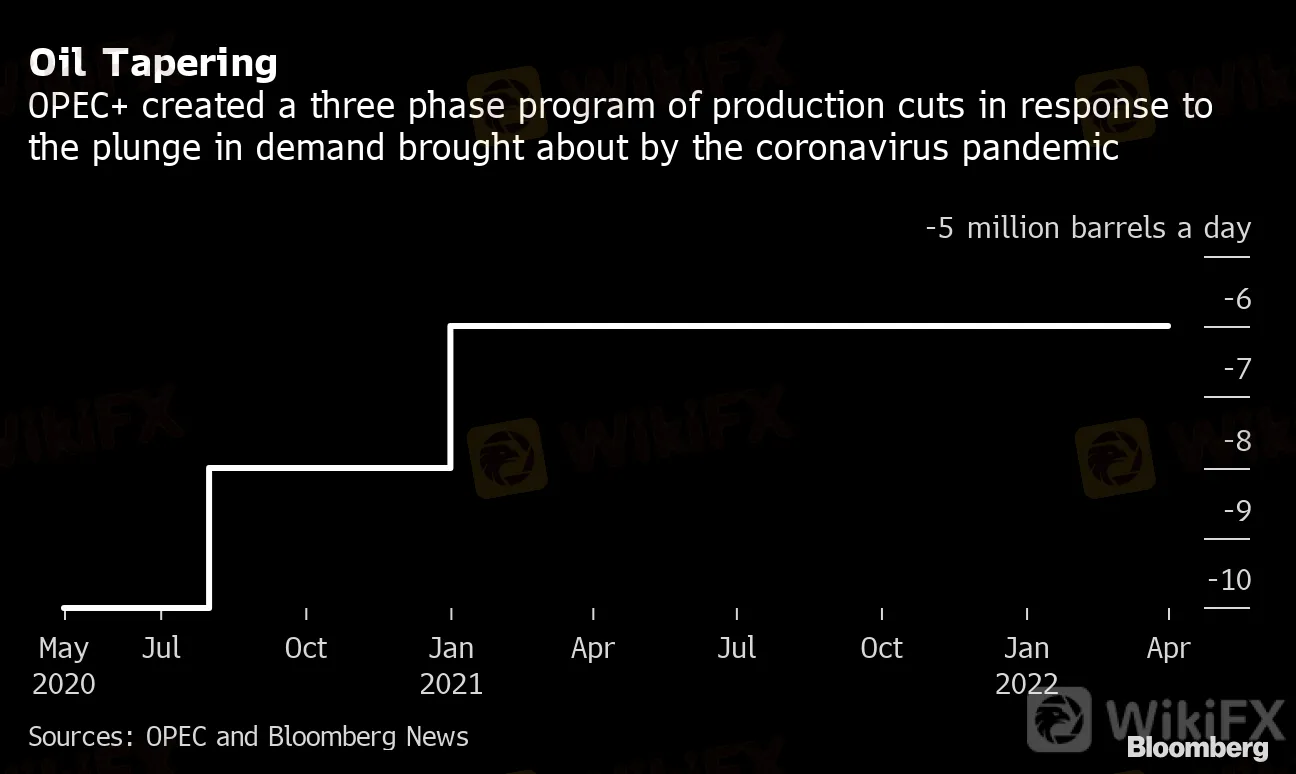简体中文
繁體中文
English
Pусский
日本語
ภาษาไทย
Tiếng Việt
Bahasa Indonesia
Español
हिन्दी
Filippiiniläinen
Français
Deutsch
Português
Türkçe
한국어
العربية
Oil Falls Toward $40 With Supply Constraints Beginning to Ease
Abstract:Oil dropped for a second day as operations in the U.S. Gulf of Mexico started to resume following Hurricane Delta and Libya took a major step toward reopening its biggest field.
Oil dropped for a second day as operations in the U.S. Gulf of Mexico started to resume following Hurricane Delta and Libya took a major step toward reopening its biggest field.
Futures in New York fell toward $40 a barrel after closing down 1.4% Friday as oil workers in Norway called off a strike. Crude explorers and tugboat operators got back to work on Saturday after Delta, which had seen about 92% of oil production and 62% of gas output shuttered. The hurricane and hopes for more U.S. fiscal stimulus contributed to a price jump of almost 10% last week.
Libya‘s National Oil Corp. lifted force majeure on the western deposit of the Sharara field and instructed its operator to resume production, according to a statement on Sunday. Sharara’s output will reach its daily capacity of almost 300,000 barrels in 10 days, a person with knowledge of the situation said.
Oil Tapering
OPEC+ created a three phase program of production cuts in response to the plunge in demand brought about by the coronavirus pandemic
Sources: OPEC and Bloomberg News

The resumption of supply from the North African country is an added headache for the OPEC+ alliance as it considers whether to proceed with a plan to restore more output in January. With coronavirus cases accelerating in many countries, the group faces a tough decision at its next policy meeting on Nov. 30-Dec. 1.
“We have supply coming back to the market, while there is still plenty of concern over demand, with the flaring up in Covid-19 cases in parts of Europe,” said Warren Patterson, head of commodities strategy at ING Bank NV in Singapore. With Libya coming back, the market is close to balance, but it will depend on demand assumptions, he said.
| Prices |
|---|
|
Brents six-month timespread was $2.08 a barrel in contango -- where prompt prices are cheaper than later-dated ones -- compared with $1.95 on Friday. The change in the market structure indicates concern about over-supply has increased slightly.
Iraq expects crude prices to remain at around $41 to $42 a barrel this year before rising to $45 in the first quarter of 2021, the state-run Al-Sabah newspaper reported, citing an interview with Oil Minister Ihsan Abdul Jabbar. The minister reiterated that Iraq, OPECs second-biggest oil producer, would continue to comply with the OPEC+ pact to curb output.
Drilling activity in the U.S., the worlds largest producer, is starting to pick up despite signs demand might not recover to pre-virus levels until 2022 or 2023. Active rigs targeting crude oil rose by 4 to 193 last week, according to Baker Hughes, an increase of 14 in the last three weeks.
| Other oil-market news: |
|---|
|
Disclaimer:
The views in this article only represent the author's personal views, and do not constitute investment advice on this platform. This platform does not guarantee the accuracy, completeness and timeliness of the information in the article, and will not be liable for any loss caused by the use of or reliance on the information in the article.
WikiFX Broker
Latest News
Elderly Trader Loses RM2.1M in WhatsApp Forex Scam
Spotware Unveils cTrader Store, Global Marketplace for Algo Creators
Gigamax Scam: Tracking Key Suspects in RM7 Million Crypto Fraud
WikiFX Review: Is IQ Option trustworthy?
CFI Partners with MI Cape Town, Cricket Team
Doo Financial Expands Reach with Indonesian Regulatory Licenses
5 Questions to Ask Yourself Before Taking a Trade
Quadcode Markets: Trustworthy or Risky?
Avoid Fake Websites of CPT Markets
Webull Canada Expands Options Trading to TFSAs and RRSPs
Currency Calculator


